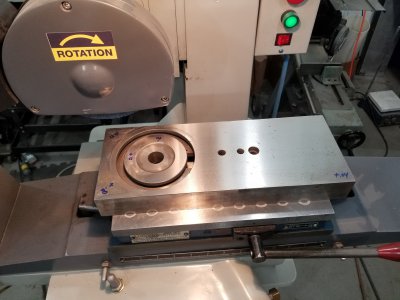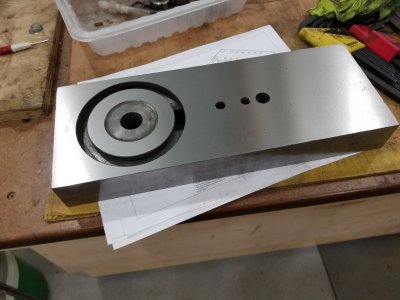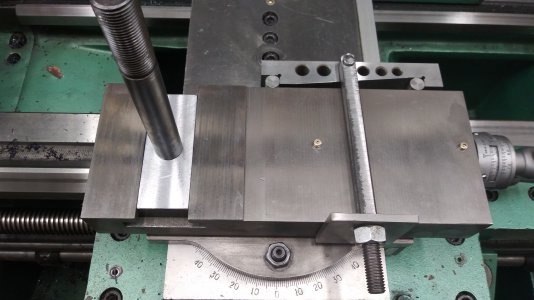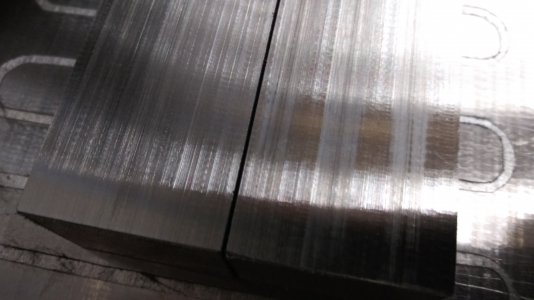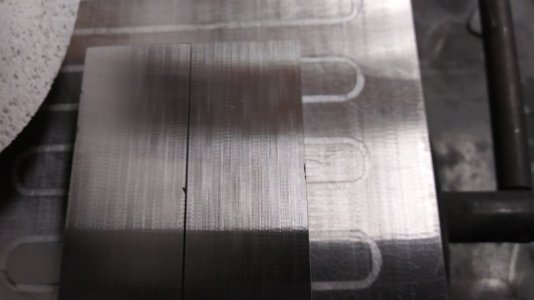- Joined
- May 23, 2017
- Messages
- 109
It's been so long, I don't remember how I fixed the cable, or what that assembly looks like. I guess I'm going to have to pull it apart to see about drilling and tapping for a slide lock on the vertical slide. I recall the brass threaded nut that was used for the height adjust, and it being damaged. I know I didn't have a tap to make a new one. There was some sort of backlash screw adjustment.
My infeed cross axis has a horrible squeal and I had worked on it. The retainer plate;
from your photo above;
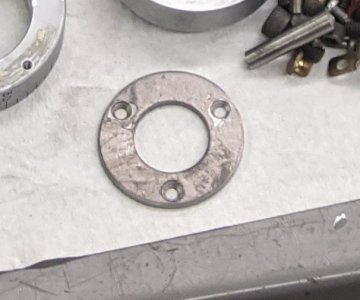
They made this part from scrap aluminum, you could see the silk screen from a sign it came from. It with too thick, to fit under the crank, so they hammered it in place to thin it out. I know your's was put together better, mine has no thread lock. Which is good, as I hate twisting the heads of of cheap hardware.
So you say 1/2x13, Tiawan must have been using SAE fasteners in the 80s. My 1976 Jet lathe made there was all metric except the threading and cross feed screws.
My infeed cross axis has a horrible squeal and I had worked on it. The retainer plate;
from your photo above;

They made this part from scrap aluminum, you could see the silk screen from a sign it came from. It with too thick, to fit under the crank, so they hammered it in place to thin it out. I know your's was put together better, mine has no thread lock. Which is good, as I hate twisting the heads of of cheap hardware.
So you say 1/2x13, Tiawan must have been using SAE fasteners in the 80s. My 1976 Jet lathe made there was all metric except the threading and cross feed screws.


